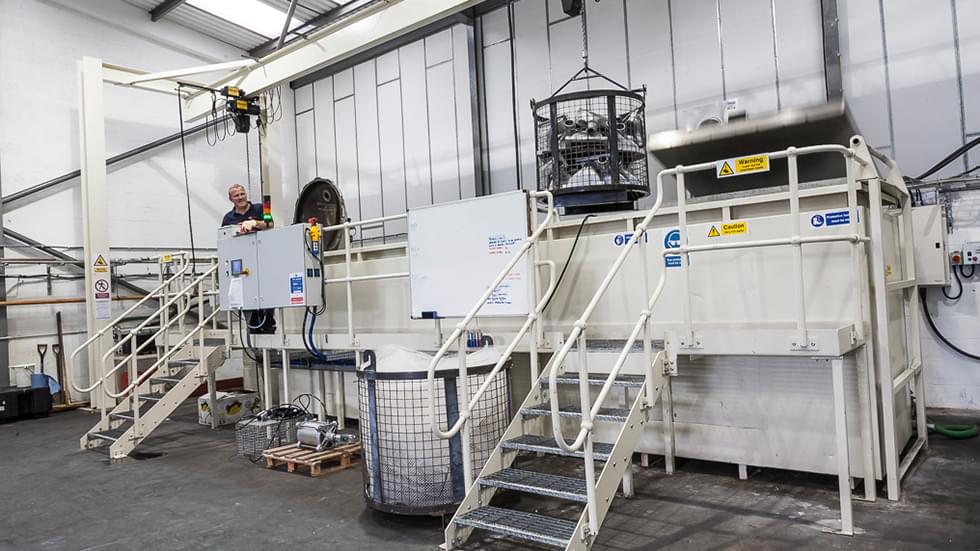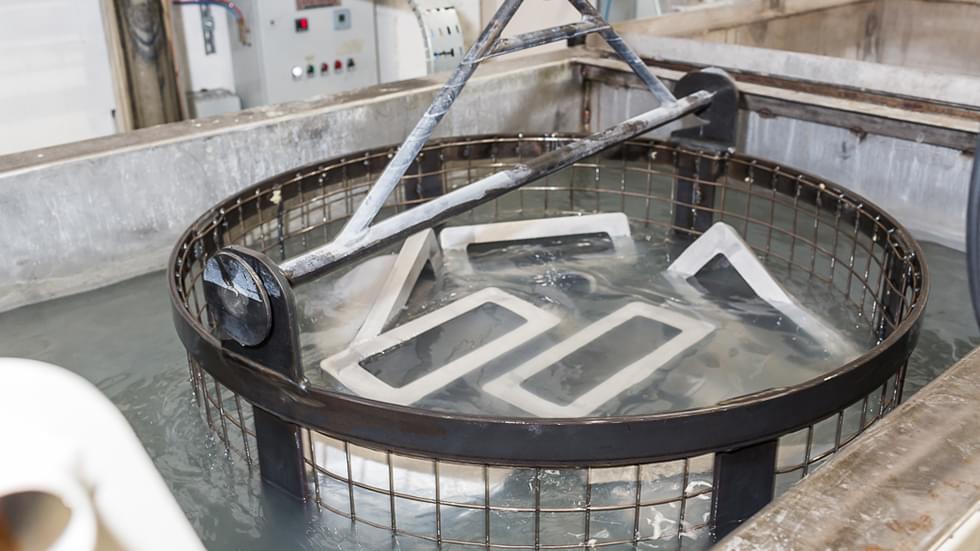Casting Impregnation
Why choose Casting Impregnation?
Today virtually all castings that are required to withstand pressure and contain a gas or liquid are impregnated as an essential part of the manufacturing process. This is partly due to the increased use of aluminium and magnesium castings in the automotive industry with more complex shapes, thinner wall sections and tighter leak specifications. High volume automotive casting production often justifies 100% impregnation of all castings to reduce the risk and the high cost of an engine or other component failing in service due to the leakage of fuel, oil or water through micro porosity. Whatever the volume or application, impregnation is a widely established rectification process for castings that fail on leak test in the automotive, defence, aerospace and general engineering industries.

Machining can turn both blind and enclosed porosity into through porosity causing a leak path, which will need impregnation to render the part leak free and recover the high cost of casting and machining.

Casting Impregnation Proccess
The vacuum impregnation process is governed by US MIL-STD-276A as well as numerous proprietary and customer specifications. The purpose of the impregnation process is to completely fill the porosity of a component with a sealant that when solidified is permanent, durable and suitable for the field of use.
In general, the vacuum impregnation process comprises four steps:
- Impregnation - where the casting is subjected to a high vacuum to remove all the air from within the porosity, the liquid sealant is introduced to fill the evacuated voids and positive pressure is applied to ensure full penetration of the part. This process is called dry vacuum pressure (DVP) and is the most complete and successful impregnation process for sealing micro porosity in pressure die-castings.
- Sealant Recovery - using a tilt, rotation or centrifuge drain to recover excess sealant from the surface of the casting, in galleries and in blind machined holes, which is returned to the impregnation station for re-use. Effective sealant recovery at this stage is essential for an economical process.
- Wash/Rinse - using a cold water dip tank, rolling rinse or pump over station to remove residual sealant from all casting surfaces, galleries and holes to ensure a thoroughly clean surface finish before curing.
- Hot Cure – using a hot water dip tank, rolling cure or pump over station to heat the casting and polymerize the sealant in the porosity, converting the sealant from a liquid to a solid, whilst also maintaining a clean surface finish without corrosion or discolouration.
Impregnation Sealants
The methacrylate based impregnation sealants used today are very similar to those developed in the late 1970’s. There have been improvements over the years in the sealant stability (pot life), temperature and chemical resistance, flexibility to withstand shock, and washing performance. Sealants have also been developed that can be recovered from the wash water to reduce waste effluent and satisfy environmental demands.
An effective impregnation sealant is required to totally and permanently seal all leak paths through a metal casting caused by porosity (resulting from gas bubbles, shrinkage cracks or inclusions during the casting process) to render the part pressure tight but without leaving any surface residues that could interfere with subsequent finishing, assembly or product performance, and without causing corrosion or discolouration of the part.
Methacrylate sealants are therefore well tried and tested for sealing porosity in castings, with a track record of over 30 years in very demanding applications. However, there are now numerous different brands of impregnation sealants available in the market and making sure you choose one that is up to the required standard can be a risky business for the user. Fortunately, this choice is made much easier following the introduction of the US MIL Specification Accreditation, which lists all the tested and approved impregnation sealants.
Using an unqualified and unapproved sealant could result in component failure. The high cost of rectifying a leaking engine, braking system or other component assembly that has started leaking in the field could be the result of employing a poor quality sealant, ineffective process equipment or not being provided with the proper technical support for your application by the supplier. This is a risk not worth taking.
Midland Impregnations use US MIL Specification approved sealants. In the liquid state the sealants have low viscosities and low surface tensions for effective penetration of micro porosity. In the cured state the sealants can withstand temperatures from -110°C to +205°C and have excellent resistance to a wide range of acids, caustics, hydrocarbons and solvents.


Casting Impregnation Applications
Virtually all cast metals that need to retain liquids or gases or prevent the ingress of moisture through porosity can be impregnated, including:
- Automotive cylinder heads, blocks, cam covers, bedplates, sumps, oil and water pumps, fuel pumps, oil filters, inlet manifolds, power steering pumps and air-conditioning compressors
- Transmission and gearbox casings
- Truck air braking systems
- Aircraft engine parts, fuel delivery systems, landing gear and braking systems
- Gas valves and regulators, commercial and domestic
- Water meters, valves and irrigation equipment
- Hydraulic pumps and pneumatic components
- Air compressors, pumps, actuators, control valves
- Powder metal (sintered) parts, for pressure tightness and to seal porosity pre-plating
- Electrical connectors, cabling assemblies and fuel cell graphite plates
- Defence missile propulsion, oil systems and compression systems
- Telecommunications equipment
- Computer disk drive components
- Marine engines, inboard and outboard
- Motorsport and vintage and classic car/motorcycle parts
- Brazed and welded assemblies
What do we provide?
- Sealing of porosity in ferrous and non-ferrous castings and powder metal parts
- Recovery of castings that fail leak test, reducing rejects and saving costs
- Preventing the leakage of gases or fluids under pressure
- Sealing of porosity in powder metal parts before plating
- Using the latest automated DVP equipment - dry vacuum and pressure impregnation
- High sealing rate on micro porosity
- High standards of part cleanliness, including fully machined components
- Fast turnaround
- Competitive pricing
- Processing both low and high volume parts
- Optional pre and post treatments, including solvent degreasing, pressure testing and deburring
- Worldwide approvals from the major OEM’s and US Military – the internationally recognised standard for impregnation
- Free technical consultation on your impregnation requirements

Worldwide approvals from the major OEM’s and US Military – the internationally recognised standard for impregnation
Worldwide Approvals
US Department of Defense Standard MIL-STD-276A for the impregnation of porous structurally sound castings and powder metal components in aluminium, magnesium, copper, iron and zinc alloys.
US Department of Defense/US Navy MIL-I-17653C / QPL 17563 qualified list of impregnation sealants for cast and powder metal components.



























- KTW-Homologation (Hygiene-Institute Gelsenkirchen)
- Department of the Navy in Washington D.C. (MIL-I-17563B&C)
- Lloyd’s Register Certificate
- NSF Certified to ANSI/NSF 61
- TÜV Certificate for DIN EN ISO 9001 : 2015
- TÜV Certificate for DIN EN ISO 14001 : 2015
- UL Certificate
- Gaz de France
- Gaswärme Institute. V. Essen
- Ford Motor Company
- Rover Group
- GKN Westland Helicopter
- BMW Rolls-Royce Aero Engines
- General Motors USA (9985791)
- Kohler Engine Division USA
- Ministry Defence India






Quick Contact Form
